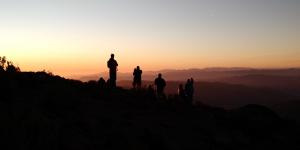Journal
Frailty
28 June 2019
 Brian Koberlein
Brian KoberleinThis past week I had to undergo a high-altitude fitness test for NRAO. It involved bloodwork to test for abnormalities, a general physical, chest x-rays, and a stress test that involves running on a treadmill while hooked up to a blood-pressure monitor and an EKG. It takes a good part of the day to get it all done. The reason for all this is pretty simple. NRAO wants to make sure I’m not likely to die at high altitudes. Since I’m heading to ALMA observatory next week, I had to go through all the tests.
ALMA is located on Chajnantor plateau in the Atacama desert of Chile. It’s at an altitude of about 16,500 ft. At that elevation, about half the atmosphere is below you. The effective oxygen level is only about 11%, as opposed to the 21% of sea level. While there are more extreme locations such as Kilimajaro and Everest, it’s still a dangerous elevation. You’re required to use an oxygen talk just to walk around the facility. And if you’re a visitor you need medical supervision.
On the other hand, 16,500 ft isn’t all that much. It’s about 5 kilometers, which even I can run in less than half an hour. A basic 5K fun run between sea and sky. A thin skin of air that marks the only habitable zone for humanity, more or less. It’s a tiny, almost insignificant layer in which all of us live. Beyond that layer marks a zone of death, and we can only enter if we bring a bit of our habitable zone with us.
We are such fragile creatures, and yet we are capable of amazing things.